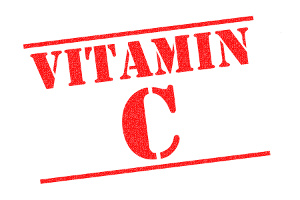Is lack of vitamin C a global problem?
 Vitamin C is important for the immune system, the nervous system, energy turnover, connective tissue, hormone production, and numerous biochemical processes. Vitamin C is also an important antioxidant that protects cells and tissues against oxidative stress and hyperinflammation that cause virus infections to become dangerous. According to a new review article that is published in Nutrients, lack of vitamin C is widespread in underdeveloped, low-income countries but also occurs in industrialized countries with higher income levels. Also, the majority of Danes fail to consume the recommended amount of fruit and vegetables that are rich in vitamin C, plus a number of factors can increase the need for the nutrient.
Vitamin C is important for the immune system, the nervous system, energy turnover, connective tissue, hormone production, and numerous biochemical processes. Vitamin C is also an important antioxidant that protects cells and tissues against oxidative stress and hyperinflammation that cause virus infections to become dangerous. According to a new review article that is published in Nutrients, lack of vitamin C is widespread in underdeveloped, low-income countries but also occurs in industrialized countries with higher income levels. Also, the majority of Danes fail to consume the recommended amount of fruit and vegetables that are rich in vitamin C, plus a number of factors can increase the need for the nutrient.
Vitamin C, also known as ascorbic acid, is a nutrient that most animals are able to synthesize as needed. But humans, apes, bats, and certain other animals have lost this ability through evolution. Vitamin C is water-soluble and can therefore not be stored in the body. This is why we need to ingest it regularly.
We use vitamin C to make collagen that is needed for the connective tissue in blood vessels, skin, gums, and bones. In old days, thousands of sailors died of scurvy, which is the extreme consequence of vitamin C deficiency and causes internal bleeding. Today, we know how to prevent scurvy with lemon juice or any other vitamin C source, and it is a very rare condition. On the other hand, subclinical scurvy is a rather common but overlooked problem that gives our connective tissue a loose structure, which can cause bruising, bleeding gums, nosebleed, and poor wound healing. Lack of vitamin C can also give impaired immune resistance, anemia, cardiovascular disease, or affect the development and function of the brain.
Furthermore, vitamin C is a powerful antioxidant that protects the brain against oxidative stress caused by free radicals. The need for vitamin C increases during infection and stress. Vitamin C also helps counteract hyperinflammation, which is when the immune defense overreacts and attacks healthy tissue. This is particularly dangerous in cases with blood poisoning (sepsis), influenza, and coronavirus infections.
Lack of vitamin C is quite common – and we need more research
According to the new review article, we need more studies of the prevalence of vitamin C deficiency worldwide, even though vitamin C is already known to play a vital role in various types of disease. The study authors looked closer at the available science and conditions that are caused by too little vitamin C. They also looked at the dietary vitamin C intake in different populations. Still, valid epidemiological studies are missing from numerous countries, but based on the available data the authors are able to conclude that vitamin C deficiency is more widespread in underdeveloped low-income countries, and they even occur in industrialized, high-income countries.
They point out that more epidemiological studies are needed to confirm their findings and to understand what consequences the widespread vitamin C deficiencies may have for global health.
Vitamin C content in mg/100 gramHiprose, raw 840 |
How do we make sure to get enough vitamin C – and what causes deficiencies?
Fruit and vegetables are good sources of vitamin C, and if you stick with the dietary guidelines you are certain to get enough of the nutrient. Still, most Danes eat far too little fruit and vegetables, especially coarse vegetables like cabbage.
In addition, stress, high-performance sports, ageing, smoking, poisoning, lacerations, and overconsumption of alcohol and narcotic drugs increase your need for vitamin C. The same goes for sugar, which is because sugar and vitamin C compete for the same channels that lead into the cells. The more sugar you eat, the more it reduces the effect of vitamin C. Therefore, it is wise to limit your intake of sugar and other empty calories. Exposed groups such as older people, individuals with stress, smokers, drug abusers, and pregnant and breastfeeding women may need more than the recommended amount of vitamin C.
Normal multivitamins contain around 80-100 mg of vitamin C, whereas vitamin C supplements typically contain 500-1,000 mg. You may want to choose non-acidic forms of vitamin C like calcium ascorbate that are gentle towards the stomach lining.
A small exampleIn order to get the same amount of vitamin C as in a tablet (750 mg), you would need to eat around 12 oranges or 53 apples. |
References
Sam Rowe and Anitra C. Carr. Global Vitamin C Status and Prevalence of Deficiency: A cause for Concern? Nutrients 6 July 2020
Yazdani Shaik BD and Pio Conti. Relation between Vitamin C, Mast cells and Inflammation. Journal of Nutrition & Food Sciences. 2016
Lester Packer, Jürgen Fuchs. Vitamin C in Health and Disease. University of California
Carr AC et al. Hypovitaminosis C and vitamin C deficiency in critically ill patients despite recommended enteral and parenteral intakes. Crit Care 2017
https://ernaeringsfokus.dk/raavarer/groentsager-og-frugt
https://frida.fooddata.dk/food/lists/parameters/47?page=5#parameter47
Search for more information...
- Created on .








